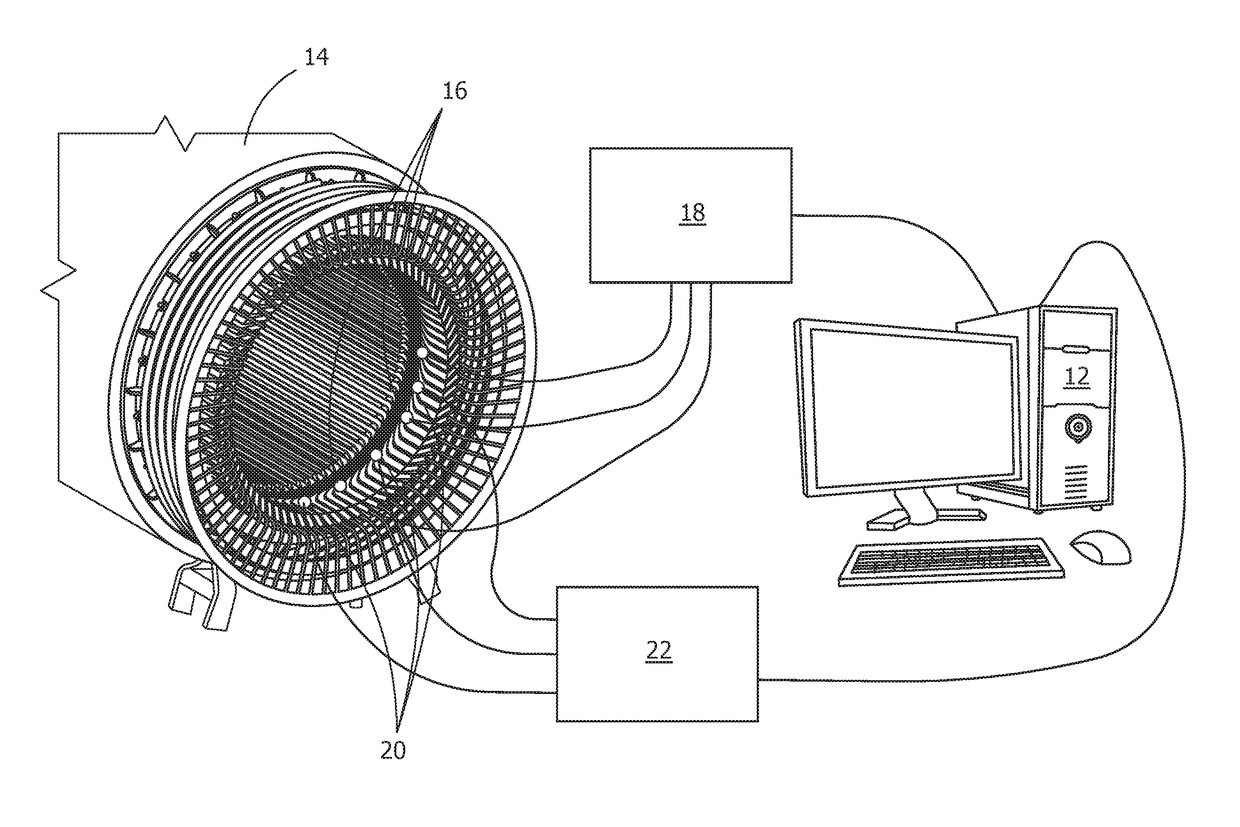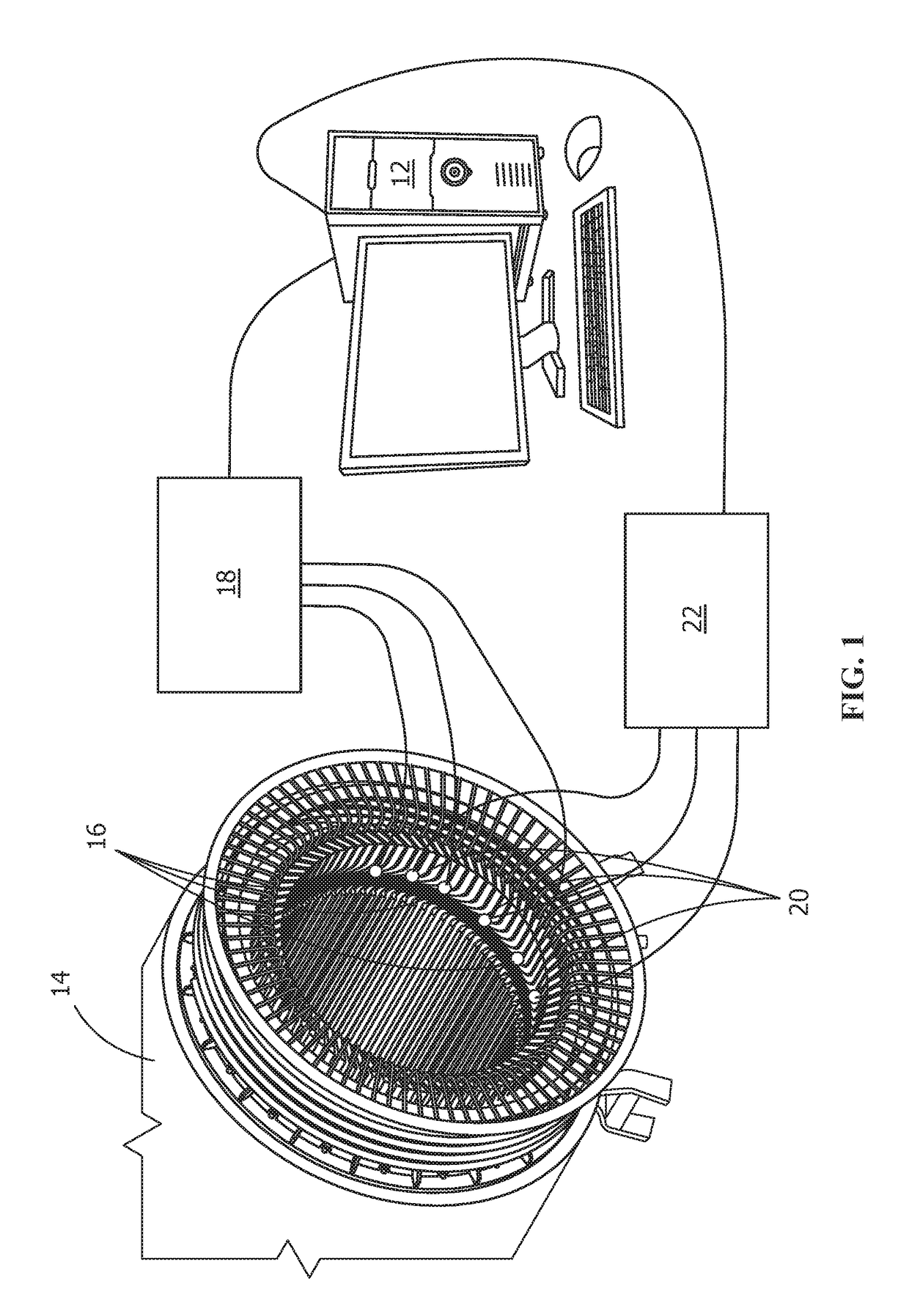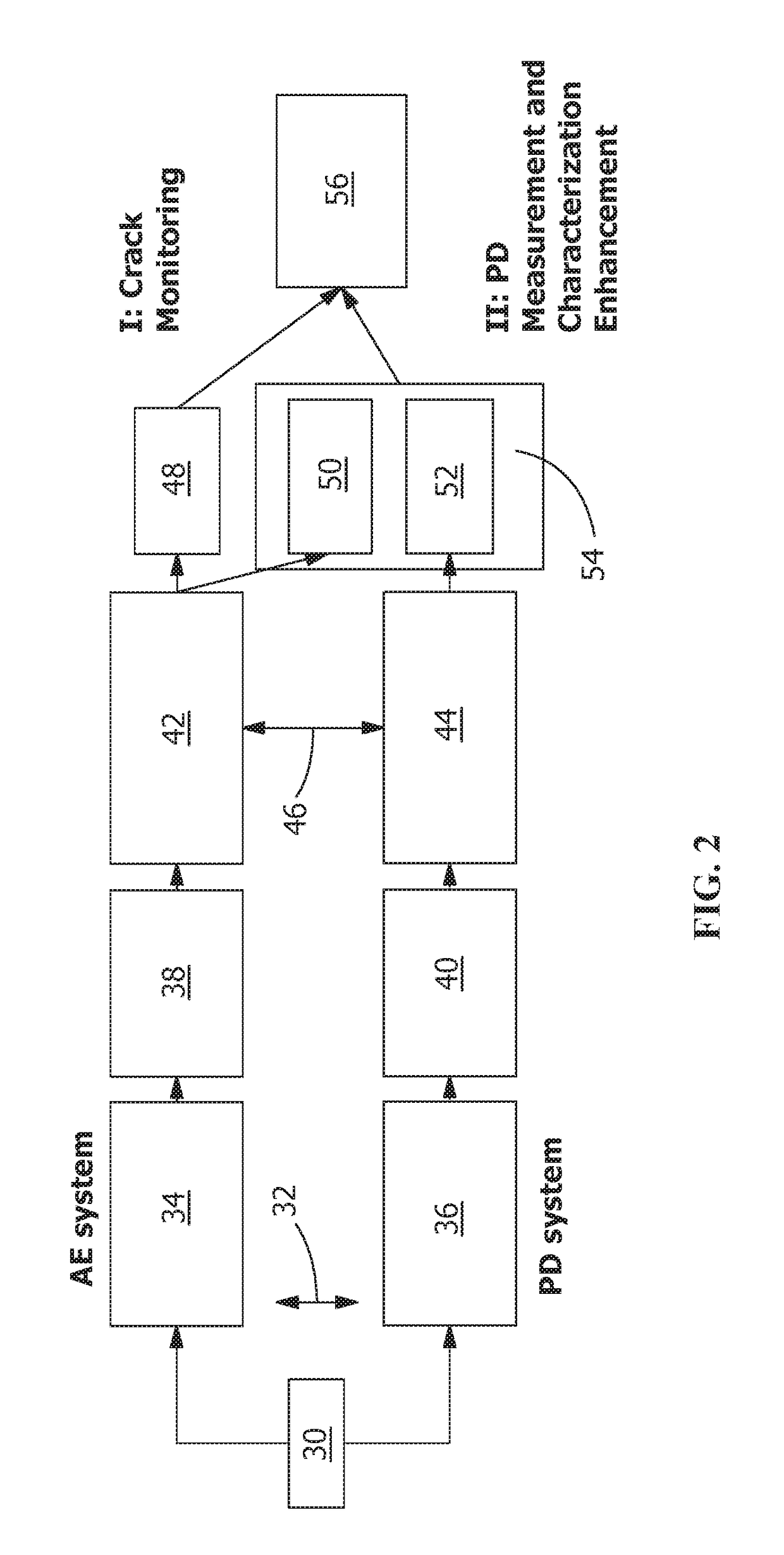Monitoring systems and methods for electrical machines
a monitoring system and electrical machine technology, applied in the field of systems and methods of detection, characterization, and diagnosis, can solve the problems of increasing the frequency of partial discharge, increasing the number of fatigue cracks, and partial discharges
- Summary
- Abstract
- Description
- Claims
- Application Information
AI Technical Summary
Benefits of technology
Problems solved by technology
Method used
Image
Examples
example 1
[0044]An AE monitoring system and a PD monitoring system were tested in combination on a metal bar serving as a model electric generator system. The monitoring system included transducers, an amplifier, and an oscilloscope. A Tesla coil was used to produce arcing to a predetermined location on the metal bar to simulate a PD event. ASTM E976 (“Standard Guide for Determining the Reproducibility of Acoustic Emission Sensor Response”) was followed to break a pencil lead against the predetermined location on the metal bar to simulate a fatigue cracking event. The 2H, 0.5-mm diameter pencil lead extended about 3 mm through a guide ring prior to the lead break. Sensors were located on both sides of the predetermined location on the metal bar and collected AE monitoring system data and PD monitoring system data.
[0045]The AE monitoring system was able to detect signals from both the AE event and the PD event, whereas the PD monitoring system was only able to detect signals from the PD event....
example 2
[0046]Sample data from a PD monitoring system and an AE monitoring system, synchronized and monitoring the same sample, show how data fusion allows an AE monitoring system to benefit from a PD monitoring system, and vice versa. A plot of electrical signals 80 measured by the partial discharge sensors is shown in FIG. 6 as a function of AC phase 82. An artificial plot of expected acoustic emissions signals from the same sample as measured by the AE sensors and synchronized with the electrical signals is shown in FIG. 7. The crack event data 84 from the AE sensors is corroborated by the absence of any associated signals from the PD sensors, and the PD event data from the PD sensors is corroborated and enhanced by the associated AE signals 86 from the AE sensors.
PUM
| Property | Measurement | Unit |
|---|---|---|
| AC) frequency | aaaaa | aaaaa |
| frequency | aaaaa | aaaaa |
| frequency | aaaaa | aaaaa |
Abstract
Description
Claims
Application Information
 Login to View More
Login to View More - R&D
- Intellectual Property
- Life Sciences
- Materials
- Tech Scout
- Unparalleled Data Quality
- Higher Quality Content
- 60% Fewer Hallucinations
Browse by: Latest US Patents, China's latest patents, Technical Efficacy Thesaurus, Application Domain, Technology Topic, Popular Technical Reports.
© 2025 PatSnap. All rights reserved.Legal|Privacy policy|Modern Slavery Act Transparency Statement|Sitemap|About US| Contact US: help@patsnap.com



